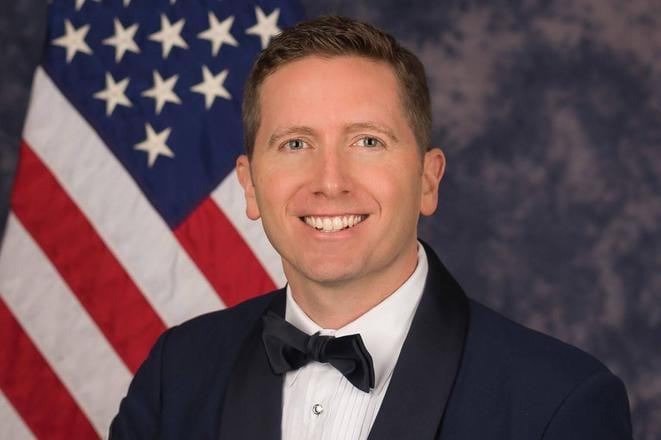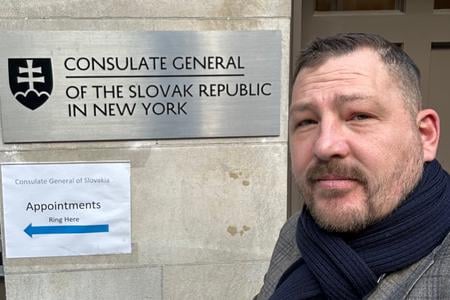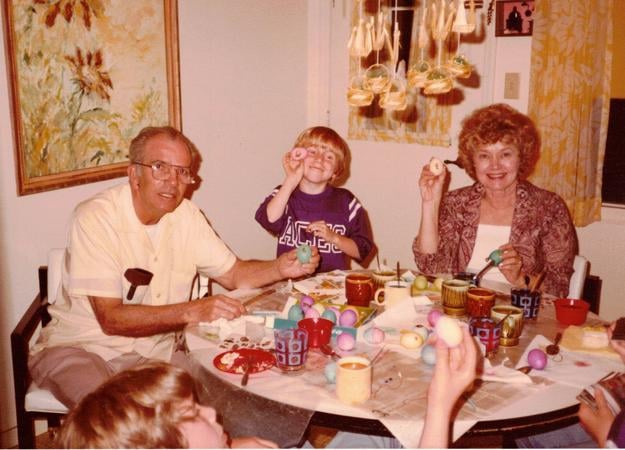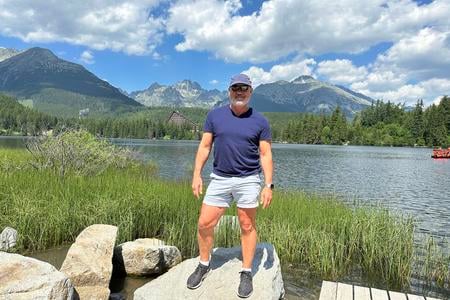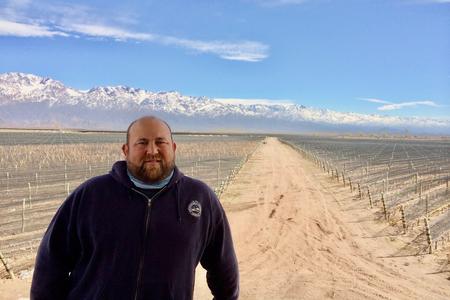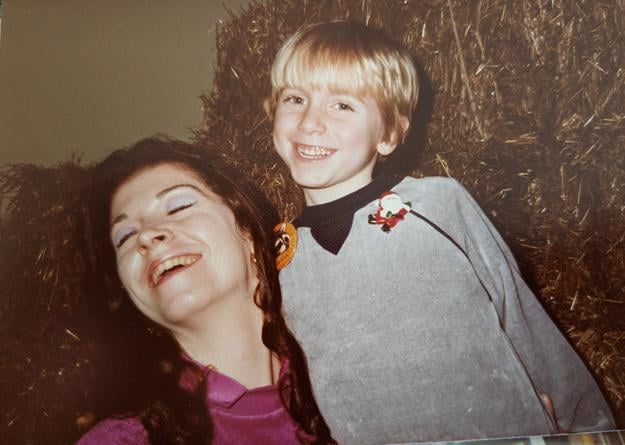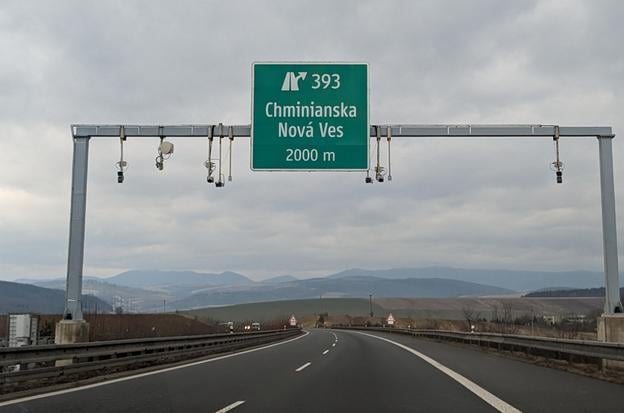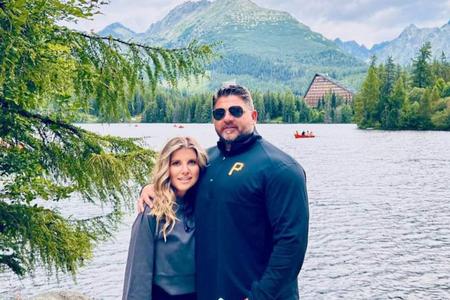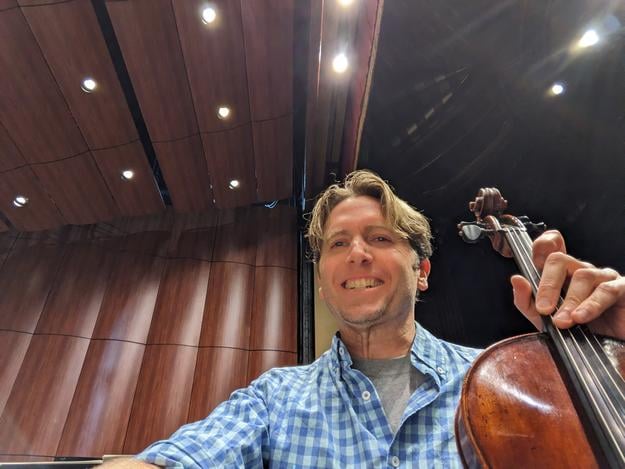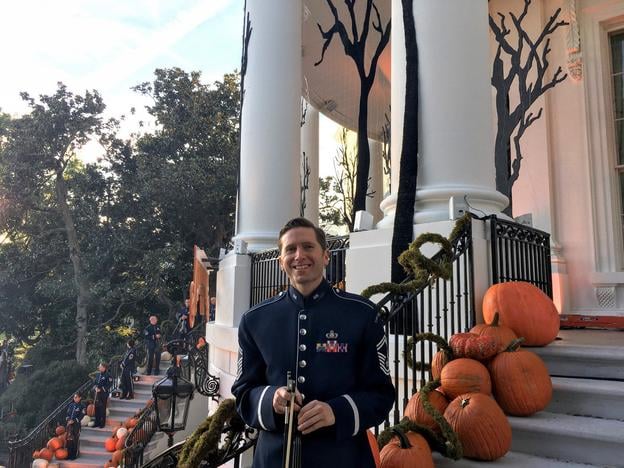You can read this exclusive content thanks to the FALATH & PARTNERS law firm, which assists American people with Slovak roots in obtaining Slovak citizenship and reconnecting them with the land of their ancestors.
For Michael "Bryce" Bunner, a fourth-generation Slovak American, discovering his roots felt like working alongside his late grandmother who had written and thoroughly researched a 541-page long genealogy book on their family.
"It was in the pre-Internet era and she still was able to find out a lot of information just by writing letters the old fashioned way. And now here I am continuing what she started and taking it to the next level in the Internet age. That's been really super. My mother and my aunt have been very happy that I've been finding out some of this family history," he tells The Slovak Spectator.
Not just happy, but actually surprised by some of the revelations. Although he knew the family had Czechoslovak roots on his mother's side—southern Indiana wasn't a place with many Slovaks or Poles, not to mention his mother's maiden surname, Kasubjak, stood out—according to Bunner, they thought they were Czech.
Things started to change some 10 years ago, when he was inspired by a college friend who, as an adult, found out she had Italian cousins, got citizenship, moved and even married there.
"And I thought, that's neat, why couldn't I do that? So I started digging a bit and I looked at my granny's book," he recollects.
Continuing the work of his grandmother
Bunner's grandmother, Naomi, started tracing her family genealogy in order to join the Daughters of the American Revolution, a non-profit, non-political organisation for women who are directly descended from a Revolutionary War patriot. She was able to trace the lineage all the way to England. That gave her what Bunner called "the genealogy bug" and she started exploring all the different sides of her family.
"I remember when she was alive she kept asking when I was going to read her book. And I said, 'I'll read it. Don't worry.' And she said, 'well, I'm not going to be around forever.' Then eventually I did read her book," he says, adding that it contains a lot of pictures and information. His grandmother died 20 years ago.
Spurred by his college friend, Bunner first researched his great-grandfather, Kaspar Kasubjak.
"The story with my great-grandfather was that he had said that you could see Russia across the field from his house," he says, adding the family really think he said Russia, but since it was 1870s, he probably meant Prussia.
Bunner was then able to learn the house was in the village of Stará Bystrica in northern Slovakia, located right next to the border with Poland, so the great-grandfather was right. In the late 19th century, Prussia included the territory of present-day Poland. Although Bunner was able to figure this out, the family still had no idea where his great-grandmother Apolonia Rusnáková came from, save the name Nová Ves.
In 2022, when the Slovak parliament changed the law on citizenship by descent, Bunner started digging with gusto. With the help of genealogy websites and the Falath law company, he was able to find more information about his great-grandmother, including old birth records, written in 19th century cursive and in Hungarian, which made it very hard to read and translate. But eventually, a name came up - Szinyeujfalu in Hungarian or Chminianska Nová Ves in Slovak, a village in the Prešov Region in eastern Slovakia.
"To my mum it came as a big shock, because she had always thought of herself as Czechoslovak Czech. She was like, 'well, we have this whole country that we don't even know anything about,'" he says.
Keeping the story for future generations
Here's the picture Bunner pieced together. Kaspar Kasubjak came over to the US in 1890 and eventually moved to a small town in Indiana, which was not a usual place for Slovaks back then since most went to Pittsburgh and Cleveland. Like many other Slovaks, he too was a miner. He married a woman named Victoria and they had four children. Unfortunately, she died in November 1908 and he found himself in need of a wife.
Earlier that year in January, Apolonia had came to the US and eventually settled in Cleveland and worked for a family.
"This is where the family stories are a little hazy. Basically, Kaspar sent for a wife for his four children. Apolonia was looking for a husband, and a match was made somehow through a man named Michal Gruš. She and Kaspar married in Cleveland in January 1909 and went on to have 11 more children. So that was the way things were back then," he explains, adding that one of their sons was his grandfather, Michael Kasubjak. Bunner also believes that it was this Michal Gruš that he and his grandfather were named after.
"My great-grandmother gave birth nearly every other year for much of her adult life. And that's just the way things were. I think we forget how difficult their lives were, and the only history we have now is maybe a birth or death record. And all the rest of their lives is kind of lost to us. My granny's book has a little bit of that and I'm trying to preserve it for future generations," Bunner explains.
Both Kaspar and Apolonia died long before Bunner was born, even his mother and aunt barely knew them. Bunner believes that they would be shocked, but still happy to learn, that their great-grandson is trying to get back to Slovakia in 2025, more than a century after they left their homeland.
When they came to the US, they just wanted to be American and leave the old country behind. As such, their descendants became separated from the Slovak culture, and pretty much totally assimilated, although there some traditional Slovak meals and cakes that were passed down and made for Christmas. The family also had some Czechoslovak ornaments for that time of the year.
The gravitational pull
Bunner's great-grandparents would probably also be surprised to learn that he has visited the villages they were born in.
"Knowing that I was Czechoslovak since I was a kid, I've always felt this gravitational pull of Europe. I can't explain it. It's just there and I think many people who are going through this process, getting the certificates, they feel the same," he says, adding that he is the middle of three brothers, one is 8 years younger, the other 8 years older. As in many other similar families, he is pretty much the only sibling actively trying to get Slovak citizenship.
"I don't think my brothers have that same gravitational pull, sentiment towards Slovakia, they're perfectly happy here. But—he doesn't know it yet—I'm going to push my younger brother a bit to get the SLA so then he can transfer it to his children, they're very young now," he explains.
Bunner got the chance to visit not long ago when he took an audition for a spot on an orchestra. He drove up to Prešov and then Chminianska Nová Ves, where he tried to look for a particular house—Apolonia's birth certificate had a house number. There was a house with that number, but according to Bunner, it looked comparatively modern.
"So there I was, an American in this eastern Slovak village, taking pictures, and a girl had been sweeping the front porch. Her mother came out, and of course spoke Slovak. It took us a while to establish what I was trying to ask for using Google Translate. I showed them the birth certificate. They said Apolonia's family probably worked for nobles and there may have been a manor house. Anyway, they did not believe the house they lived in was the one I was looking for," he explains, adding that he's not giving up.
"It made me feel really happy. I just felt like I was honouring her."
He then drove across Slovakia, passing the Tatras all the way to Stará Bystrica, on the same day.
"I didn't really talk to anyone there due to the language barrier. I also read about the village and it seems like it was a similar arrangement, working for the noble families of that era. There's a beautiful cemetery and I would like to make this point that Slovaks take very good care of their cemeteries. Everything is just very neat and beautifully decorated and well maintained. In his lifetime, my Grandpa Mike would make it a point to go and visit the cemetery, take care of things," he says, adding that he was unable to find any Kasubjak at the cemetery while he was there, but didn't have much time to look thoroughly.
So far he knows of no living relative in Slovakia, but that will be the next step.
Finding a place, learning the language
As to the reason Bunner was in the country for an audition in Košice: Bunner is a professional musician and retired military. He spent 21 years in the Air Force Strings and performed at various diplomatic events. He currently plays in orchestras in New York and Pennsylvania. He wanted to take an audition in Europe because he had never tried it; it's a slightly different process compared to the US.
"When you're a professional musician, if you win a job, you're in that job. It's very difficult to win a job in music. I played at the audition and they liked me. But it would have been a full-time commitment and with my parents getting older, my husband's job, and commitments here in the US, I wasn't able to make it work. I was really disappointed at the time. In two, three years, maybe," he says.
As for his future plans, Bunner would like to be able to go to Slovakia and start playing part time or maybe "a week here a week there" and try to find a place and establish himself in the Slovak musical scene if there is interest. At the moment, though, he loves the orchestras he plays in and the people he works with, so it would be difficult to leave all of that behind and move somewhere else.
"Still, the gravitational pull is really strong and I loved Košice, it’s a beautiful medieval town. The people in the orchestra were wonderful. I even talked to a man at the security desk because he was fascinated that an American came to take this audition," he recollects, adding that hopefully he can get the residency work permit and the Košice orchestra finds itself in need of someone like him.
This experience was also the reason he started learning Slovak. Working in an orchestra, knowing the sheet music would not be enough; he would need to communicate with other members. "I just couldn't sit there like a deer in the headlights," he explains, adding that the gravitational pull he talks about also means he would like to be fluent in a language other than English.
Thanks to a Facebook ad, he came across Katka/KAZO, a language professor who writes her own Slovak books. Together, they are working through the Slovak language coursebooks.
"She told me I'm her 'hviezda' (star), but I don’t feel like it," Bunner says, jokingly. "The hard part has been learning the accusative case, how the words end in a case based on the gender. My husband's mind is like a sponge where foreign languages are concerned, whereas mine is like a brick wall and everything bounces off," he continues, adding that his husband really enjoys helping him with learning as they try to speak in very simple Slovak phrases like "I'm going to take the dog for a walk" or "What's for dinner".
Bunner recollects an interesting coincidence during his visit. While in Prešov, he went into a small bar that had a Gypsy band playing.
"One of the musical parts of being in the Air Force Strings was that we could play in the Gypsy strolling dance style, but we played all kinds of different music. So the band in the bar started playing a piece and in my mind I was like, I know it! I didn't want to jump in because I didn't know enough Slovak, but they would have been very surprised if they'd have handed me the violin," he recollects.
Spectacular Slovakia travel guides
A helping hand in the heart of Europe thanks to our Slovakia travel guide with more than 1,000 photos and hundred of tourist spots.
Our detailed travel guide to the Tatras introduces you to the whole region around the Tatra mountains, including attractions on the Polish side.
Lost in Bratislava? Impossible with our City Guide!
See some selected travel articles, podcasts, and traveller info as well as other guides dedicated to Nitra, Trenčín Region, Trnava Region and Žilina Region.


